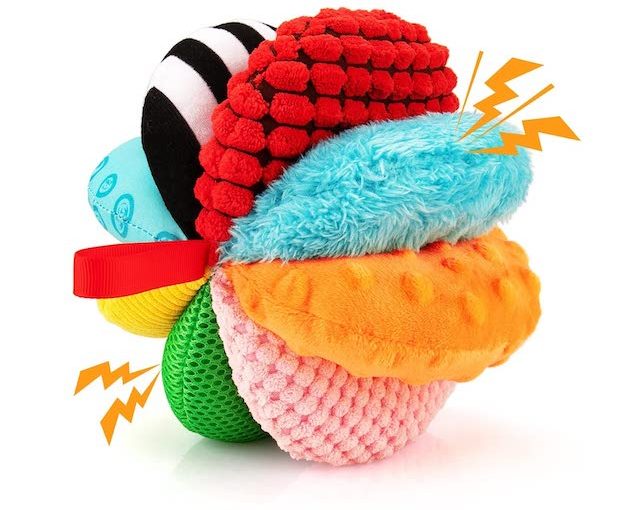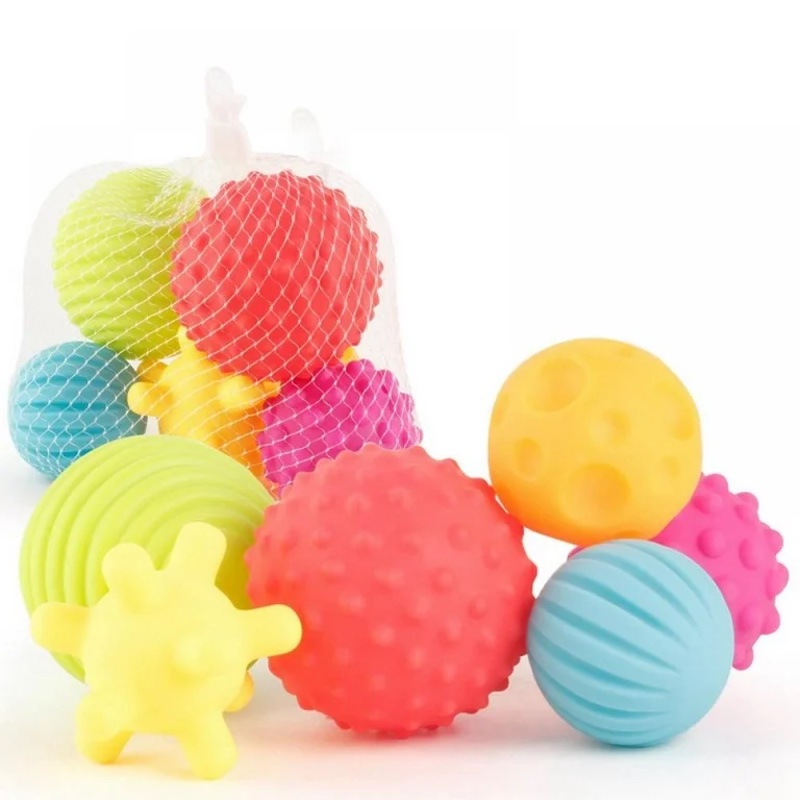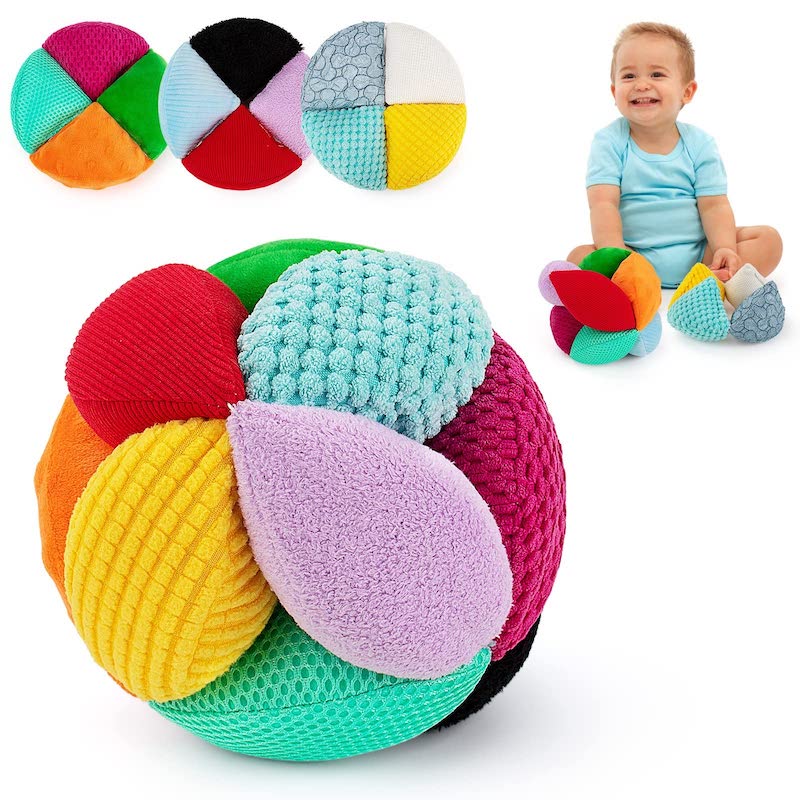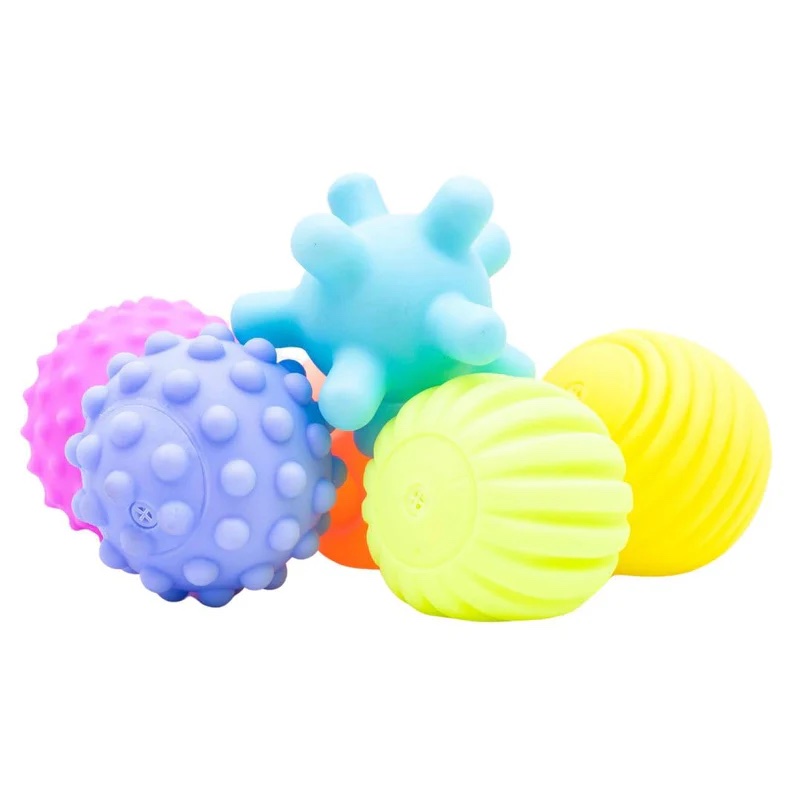Benefits of Sensory Ball Toys for Children
Sensory ball toys are not just fun; they offer multiple benefits for children’s development. These toys can stimulate a child’s senses, including touch, sight, and even hearing, depending on the toy’s features. Here are some of the key benefits:
- Development of Motor Skills: Playing with a sensory ball toy can improve fine and gross motor skills. Children learn to grasp, throw, or roll the ball, which are essential movements.
- Enhancement of Sensory Processing: These toys have different textures, colors, and sounds that help kids explore and make sense of their environment.
- Cognitive Growth: As children play with sensory ball toys, they learn cause and effect. For example, when they squeeze a ball and it squeaks, they connect actions with outcomes.
- Emotional Regulation: Sensory ball toys can be calming for children. They are especially beneficial for kids with sensory processing disorders or autism.
- Social Skills Development: When used in group settings, these toys encourage sharing, taking turns, and other social skills.
Selecting the right sensory ball toy is important to harness these benefits. Factors like the child’s age, interests, and developmental goals play a crucial role in toy selection.
Different Types of Sensory Ball Toys
When it comes to choosing a sensory ball toy for a child, variety is key. These toys come in various shapes, sizes, and textures to cater to different preferences and developmental stages. Here are a few common types that you might consider:
- Textured Balls: These have surfaces with bumps, ridges, or other patterns that stimulate a child’s sense of touch. They are great for tactile exploration.
- Soft Rubber Balls: Soft to the touch and often brightly colored, these balls are ideal for younger children. They’re squishy and easy to grip.
- Bouncy Balls: These add a dynamic element to play. Kids can bounce them to work on hand-eye coordination.
- Light-Up Balls: Incorporating visual stimulation, these balls flash or change colors when they’re bounced or squeezed, appealing to a child’s visual senses.
- Musical Balls: Some balls make sounds or play music when manipulated, providing auditory feedback that many children enjoy.
- Inflatable Balls: Larger and more buoyant, these are perfect for kicking, throwing, and rolling, aiding in gross motor development.
- Sensory Balls with Fragrance: Uncommon but available, these can produce a scent when squeezed, adding an olfactory element to sensory play.
The choice of a sensory ball toy should align with both the child’s needs and the areas of development you want to encourage. For instance, if the goal is to enhance fine motor skills, a textured ball might be a perfect choice. Conversely, to improve coordination, a bouncy or light-up ball could be more engaging. It’s important to select a sensory ball toy that is not only safe and age-appropriate but also captivating enough to hold the child’s interest over time.
Factors to Consider When Choosing a Sensory Ball Toy
Selecting the perfect sensory ball toy involves various factors that tailor to the child’s needs. Here are essential considerations to keep in mind:
- Child’s Age: Age is pivotal in toy selection. Babies and toddlers might prefer soft, squishy toys for safety, while older children may enjoy more complex sensory balls that offer different interactive features.
- Child’s Interests: Pay attention to the child’s likes and dislikes. Some children might be drawn to a sensory ball toy with bright colors or lights, while others might favor toys with distinct textures or sounds.
- Developmental Stage: Match the toy with the child’s developmental stage. For instance, a ball that promotes crawling might be suitable for infants, whereas older children might benefit from balls that enhance throwing and catching skills.
- Texture and Material: Consider the material of the sensory ball toy. It should be easy to clean, durable, and, most importantly, safe for the child to handle and chew on.
- Size and Weight: The sensory ball toy must be the right size and weight for the child to manage, ensuring it is neither too heavy nor too small to avoid hazards and facilitate comfortable play.
- Sensory Features: Evaluate the sensory features on offer. Toys with varied textures, sounds, and visual elements can enrich the sensory experience, making playtime more stimulating and educational.
- Ease of Use: The sensory ball toy should be simple for the child to use independently, encouraging self-exploration and learning without constant adult intervention.
Combining these factors will help you find a sensory ball toy that is not only enjoyable but also contributes positively to the child’s development. Remember, the goal is to provide an engaging play experience that meets the child’s individual needs while also promoting growth and learning.
Age-Appropriate Sensory Ball Toys
Selecting age-appropriate sensory ball toys is essential for safe and effective play. The right toy matches a child’s growth stage, ensuring they can enjoy and benefit from the sensory experience. Here’s how to choose the best sensory ball toy based on age:
- Infants (0-12 Months): For babies, choose soft, squishy sensory balls with contrasting colors. These aid visual development and are safe for mouthing.
- Toddlers (1-3 Years): Toddlers enjoy textured balls that are easy to grasp and toss. Ensure the balls are large enough to prevent swallowing.
- Preschoolers (3-5 Years): Preschool-age children can handle more complex toys. Bouncy or light-up balls stimulate their growing motor skills and imagination.
- School-Aged Children (5+ Years): Older kids benefit from sensory balls that challenge their coordination. Balls that require kicking, catching, or complex manipulation are ideal.
Remember to always inspect the sensory ball toy for age-appropriate labels and avoid small parts that can be a choking hazard for younger children. This practice ensures the toy is suitable for the child’s current abilities and can support their development in a fun and safe manner.
Sensory Ball Toys for Specific Developmental Goals
When selecting a sensory ball toy, it’s beneficial to consider the developmental goals you have for your child. Specific sensory ball toys can support different learning objectives and skills. Below are some developmental goals and the corresponding toys that can aid in achieving them.
Fine Motor Skills Development
Textures are key for fine motor skills. Choose a sensory ball toy with various bumps and ridges. These toys require children to pinch, poke, and grasp, fine-tuning their dexterity.
Gross Motor Skills Enhancement
Inflatable and bouncy balls are ideal for gross motor development. They encourage kids to kick, throw, and chase, promoting overall body coordination.
Cognitive Abilities Boost
Balls that light up or make sounds when acted upon teach cause and effect. Children quickly learn that their actions have direct outcomes.
Sensory Processing Improvement
Sensory balls with different materials and textures help the brain process various tactile information, which is vital for sensory integration.
Social Skill Building
Using sensory ball toys in group settings can foster important social interactions. Sharing and taking turns while playing with the balls teaches valuable social skills.
By matching the sensory ball toy to your child’s developmental needs, you can provide a fun, stimulating environment that supports their growth in targeted areas. Keep these goals in mind as you choose the right sensory ball toy for your child.
Safety Considerations for Sensory Ball Toys
Ensuring the safety of sensory ball toys is paramount when selecting the right item for a child. Here are crucial safety considerations to keep in mind:
- Non-toxic Materials: Verify that the sensory ball toy is made from non-toxic materials. This is essential since children often put toys in their mouths.
- Age Recommendations: Adhere to the manufacturer’s age recommendations. Toys designed for older children may pose risks for younger ones.
- No Choking Hazards: Avoid toys with small parts that could detach and become choking hazards, especially for babies and toddlers.
- Sturdy Construction: Choose toys that are durable and won’t easily break, preventing pieces from coming loose during play.
- Cleanliness: Ensure the sensory ball toy is easy to clean. Toys that can be sanitized prevent the spread of germs.
- Supervision: Always supervise your child during play, especially with new toys, to ensure they’re being used safely.
- Check for Recalls: Stay informed about product recalls. Do not use toys that have been recalled for safety issues.
By carefully considering these safety aspects, you can provide a secure play environment. Always prioritize your child’s well-being alongside their developmental benefits when choosing a sensory ball toy.
How to Integrate Sensory Ball Toys in Playtime
Incorporating sensory ball toys into playtime can enhance the play experience significantly. Here’s how to effectively integrate these versatile toys:
- Create a Sensory Path: Lay out a path with different textures and encourage your child to roll or push the sensory ball along it.
- Color and Shape Identification: Use multi-colored and variously shaped sensory balls for games that boost color and shape recognition.
- Hide and Seek: Hide the sensory ball and guide your child to find it using clues. This encourages problem-solving and exploration.
- Catch and Throw: Simple games like catch and throw help improve hand-eye coordination and promote interpersonal interaction if played in pairs or groups.
- Obstacle Course: Incorporate sensory ball toys in an obstacle course where children maneuver the ball through different challenges.
- Sound Association: If using a musical sensory ball toy, create a game where a certain action must be taken when a specific sound is played.
- Relaxation Techniques: Use a soft sensory ball toy for gentle massage and relaxation exercises, aiding in emotional regulation.
Regularly including sensory ball toys in these fun activities promotes active learning and keeps children engaged. Always guide and supervise your child to ensure they get the most out of their sensory play. The key is to combine fun with developmental support in a safe setting.
Recommendations: Popular and Highly Rated Sensory Ball Toys
When it comes to selecting a sensory ball toy, the market offers a plethora of options. To assist you in making the right choice, here are some popular and highly rated sensory ball toys that cater to a range of developmental goals:
- Textured Multi-Sensory Balls: Often sold in sets, these balls come with varied textures, ensuring tactile stimulation. Many parents and educators favor these for their versatility.
- Soft Rubber Rainbow Balls: These colorful toys are a hit with infants and toddlers, providing a gentle and safe option for early age sensory exploration.
- LED Light-Up Balls: With their flashy lights, these balls captivate children’s attention and are ideal for visual tracking exercises.
- Musical and Vibrating Balls: Offering auditory stimulation, these sensory ball toys can enhance a child’s listening skills and are enjoyable for rhythm-based activities.
- Large Inflatable Therapy Balls: Great for balance and coordination, these balls are often used in physical therapy but also suit home play environments.
- Scented Balls: Though less common, they add an olfactory dimension to sensory play. Kids enjoy guessing the scents, turning playtime into an educational experience.
Each of these options has been rated highly by consumers for their quality, safety, and ability to engage and support children in their developmental journey. Remember to consider the factors previously discussed, such as the child’s age, interests, developmental stage, and safety when selecting the perfect sensory ball toy. Popular brands and products often have numerous reviews that can provide insight into how well the toy works in real-world scenarios.
In conclusion, the right sensory ball toy can offer endless hours of fun and development. Keep an eye out for toys that match your criteria and have earned accolades from parents, caregivers, and child development experts alike.



